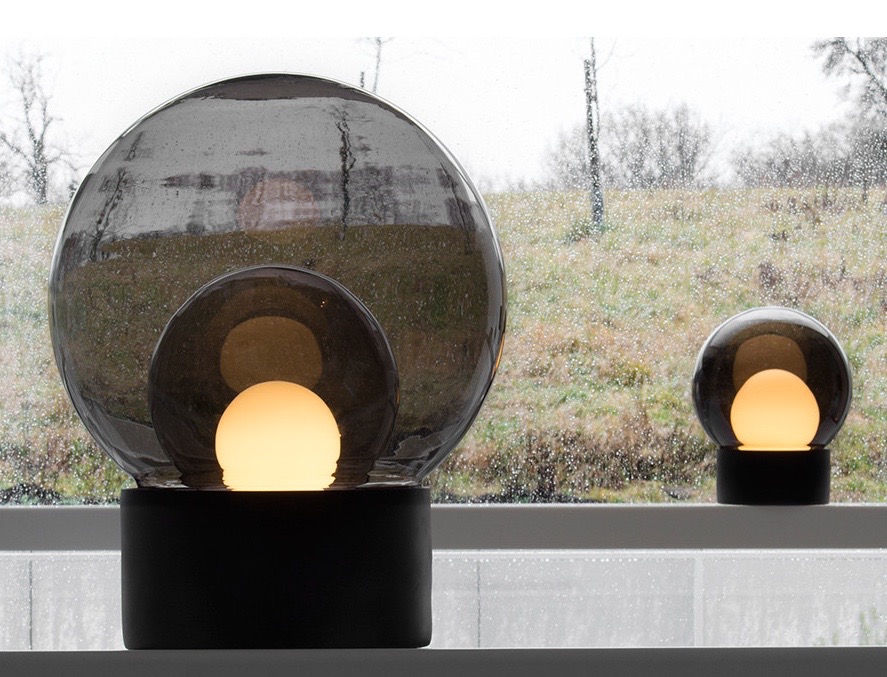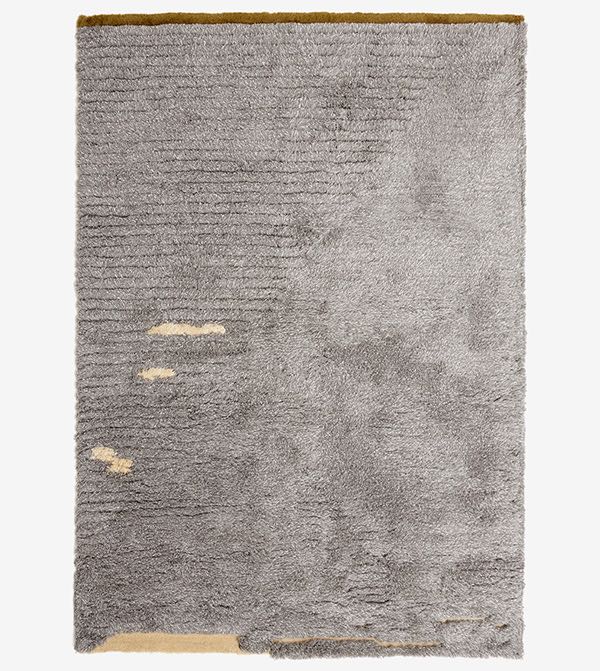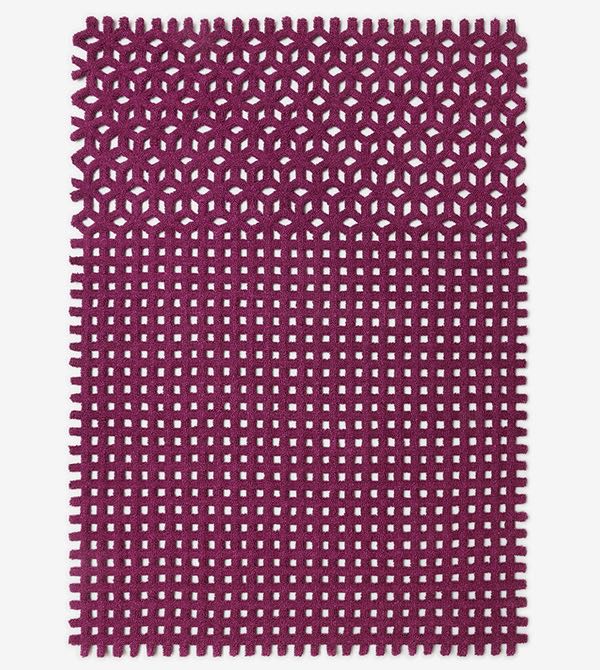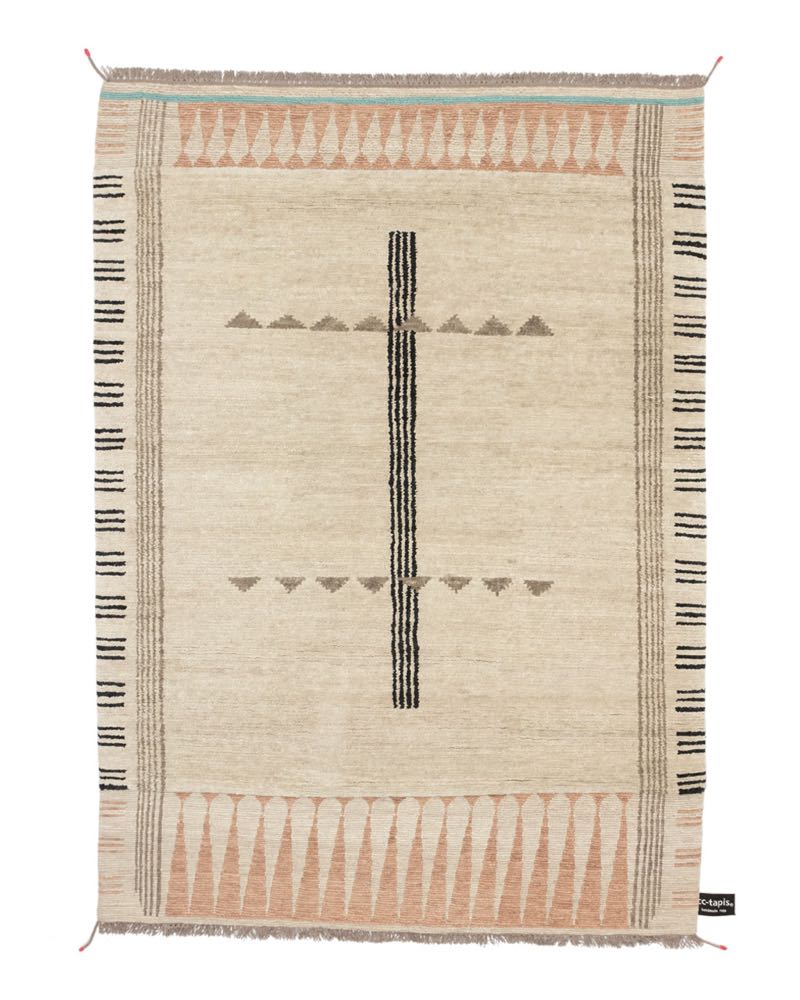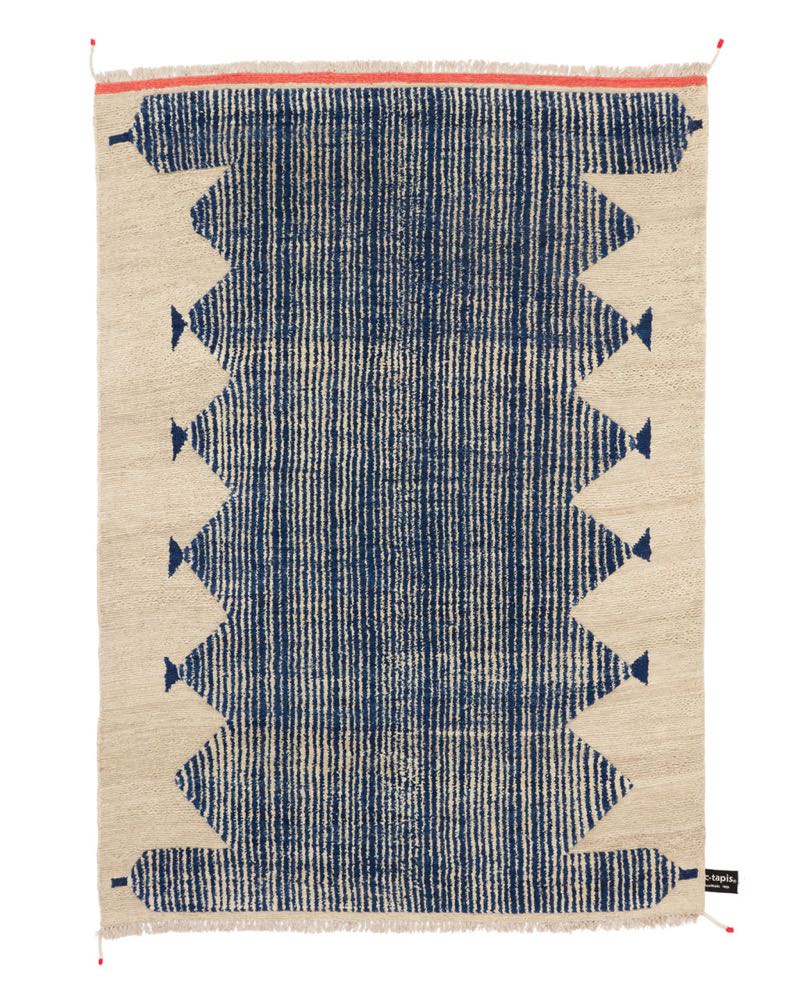You might be forgiven for thinking that it might have been simpler to take the Cologne fair to Sebastian Herkner's studio in Offenbach am Main and do it all there. The German designer was not only chosen to create IMM Cologne's Das Haus for 2016 (as have Patricia Urquiola, Neri & Hu and many others before him), but the cheeky young fellow also designed 19 new products to go inside his circular house of fabric. In reality however there was much more to IMM Cologne 2016 than just Mr Herkner.......several other companies actually released new products too! Read on to discover all the great new products and the rather plentiful array of reissues.
Herkner's products included several new pieces for German brand Pulpo. Herkner has been the art director of the company for several years. This year he designed a new table lamp called 'Boule' named after the French ball game and an exquisite but chunky daybed called 'Pallet'.
The output from Herkner wasn't all large-scale furniture pieces either. He somehow managed to take some time off during the year and head for Columbia with Ames founder Ana Maria Calderón Kayser where he designed a collection called, Ames Sala (Ames is a Columbian brand based in Germany) consisting of a large number of handmade items manufactured by traditional manufacturers across Columbia - baskets, bowls, vases, rugs and cushions.
In other news it was the 20th anniversary of Phiipp Mainzer's iconic stool design 'Backenzahn' for German brand E15. Rather than pile the solid timber design in a high pyre or create some sort of conceptual angle, the installation revealed the number of fakes that are passing themselves off as authentic 'Backenzahn' stools. As part of The Featured Editions curated by German online design resource Stylepark in collaboration with Dick Spierenburg, the installation had the fakes lined up as if waiting to have their mug shots taken. Spot the real 'Backenzahn' in the line-up below.
Another German brand that stood out was Richard Lampert, although this was mainly for the bright wire designs of Steffen Kehrle rather than any overt industry stance.The often quirky Stuttgart based company showed an extensive array of Kehrle's 'Bazar' range of wall and floor mounted coat racks whose design professes to allow items to be hung more densely than normal.
Danish brand &Tradition launched a new desk in the 'Palette' range by Spanish designer Jaime Hayon that combines superfine metal legs in black steel rod with a kidney shaped top in timber. A second small circular top pierces the desk's surface creating an added sculptural effect.
Young German brand New Tendancy, specialise in clever furniture solutions in steel but they do so with a particularly minimal and uncompromising aesthetic. Joining their stable of utterly precise powder coated steel designs is their first chair 'Throne'.
The Pure Talents Contest featured a number of great designs but it is hard to go by a portable bathtub that looks better than most high-end regular ones. Made from carbon fibre, 'XTEND' weighs just 7 kilos and can be carried in one hand very easily. To watch the video on how it assembles click here.
Previewed in late 2015, Patrick Norguet's 'Colander' chair for Kristalia is now fully developed. The cast aluminium and polypropylene chair is as physically light as it is visually. Designed for outdoor use the chair has a softness to its form that makes it equally applicable to interiors. From a distance the chair actually looks like woven cane. As is usual for Norguet, the design is beautifully resolved and the chair also stacks making it perfect for cafes and restaurants.
There were an abundance of new rug designs premiered at Cologne from brands such as cc-tapis, Nanimarquina, and Danskina. The woven kilim style seems to be de rigueur at the moment but Roderick Vos showed a collection of lush raised pile rugs in rich colours called 'Seasons' for Dutch brand Leolux.
Dutch designer Hella Jongerius was made Design director of Danskina in 2013 and has rapidly transformed the brand's range. Her latest offering is a collection of five designs that reinvent the way the brand's rugs are made, whether woven or tufted. The fibres and the techniques have been developed over several years of intense research.
The 'Plumy' seat by French designer Annie Hieronmous certainly celebrates the fuller figure. The ample proportions of this squidgy design, originally designed in 1980, has been reissued by Ligne Roset. It has a certain similarity to Ligne Roset's best seller, the 'Togo' sofa and lounge chair - no doubt part of the reason why the brand is introducing it to a new generation of comfort lovers.
Back to the somewhat flatter subject of rugs, Italian brand cc-tapis launched a number of new designs including one by Giuseppe di Costanzo called 'Oldie Segne MInimi' and an extensive range by Chiara Andreatti called 'Primitive'.
While rugs may be heading down a path of more subtle hand-dyed colours, there was still plenty of intensely colourful products being launched. One such object was the multi-faceted 'Pli' table by young French designer Victoria Wilmotte for ClassCon. Made from specially painted stainless steel with a tinted crystal glass top, the table captures slivers of reflection and light.
For Danish fabric house Kvadrat, colour is a complex art form but it can also be a bit of fun. The stand for sister brands Kvadrat, Danskina and KInnersand at Cologne was designed by Werner Aisslinger in collaboration with Tina Bunyaprasit and featured a hut in sorbet-like colours, overhead sails in bolts of fabric and Aisslinger's recent sofa design, 'Hobo'.
The Bauhaus was known for its adherence to a limited colour palette of white grey and on rare occasions a dull red. Thonet Germany has decided however that this should come to an end. They have released a collection of tubular steel designs from the period by Mart Stam (S33 and 34), Marcel Breurer (S35 lounge chair) and Mies van der Rohe's S533 in a range of luscious colours.
The All Seasons collection isn't just about adding colour to designs that have traditionally only come in black and chrome. In line with a big shift by brands to release outdoor versions of their most iconic furniture designs, Thonet are manufacturing these chairs so they can withstand the elements, with seats in either mesh or specially selected timber in the case of the S35.
In stark contrast to the chunkiness of Herkner's 'Mark' design for Linteloo, German luxury brand Walter Knoll reissued the quintessentially fifties form of Arno Votteler's Model 368 chair. Designed in 1956, the chair features spidery metal legs and curved solid timber armrests. The design comes in a high and low back version.
In addition to the Model 368 armchair by Votteler, the brand launched a collection of chairs from the 50's and 60's by Turkish designer Sadi Ozis (with input from his son Neptun Ozis). The shapes of the chairs are consistent with the original designs but they have all been adapted to include upholstery instead of their post-war austerity materials like fishing net. The 'Fishnet' chair (right) was designed in 1959, the 'Burgaz' chair (left) in 1953 while perhaps the most unusual, the 'Rumi' (centre) was designed in 1961. The Burgaz Neptun Collection was previewed at Mozaik Design in Instanbul in October last year but Cologne was the collection's first major international design fair showing.
Cologne is home to young German design studio Kaschkasch (Florian Kallus and Sebastian Schneider), so it is no wonder that they were happy to put in some serious effort when it came to showing their latest design for Zeitraum at IMM Cologne. The 'Rail' table is a clever variation on the standard trestle concept. With 'Rail', extra leaves can be added at both ends and the trestle legs slide out to lock the leaves in place
Adding to the growing list of reissued designs launched in recent months was the 'Sofabank' by Rolf Heide (1969) reissued by Müller Möbelwerkstatten and a pendant light by Danish designer Louis Weisdorf and side table design from Mathieu Matégot. Both the later two designs were reissued by Danish brand Gubi. Mategot's 'Lounge table' is beautifully sinuous and bound to have many admirers while Weisdorf 's Multi-lite pendant is nothing short of startlingly original. The pendant can be moved so as to cast light in a number of different ways as the outer dome of metal splits in two with each half being able to move through 360 degrees. It can therefore operate as an uplight or downlight or light either side. As a piece of mechanical engineering it is brilliant but it also works beautifully on a purely sculptural basis. Not surprisingly Weisdorf once worked for Verner Panton.
Another major fair, Maison & Objet, is just finishing in Paris as this post is being completed. Design Daily will run the highlights from this eagerly anticipated event in early February. Stay tuned.


